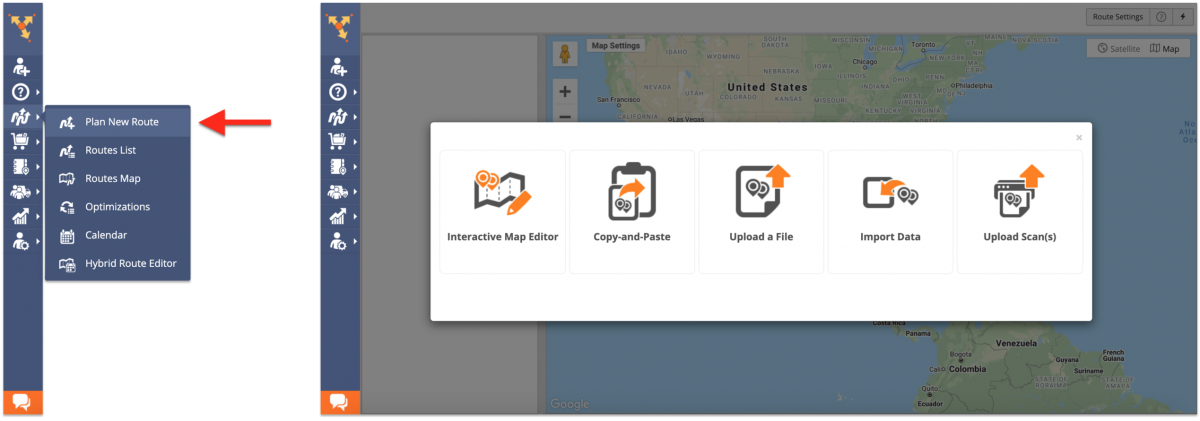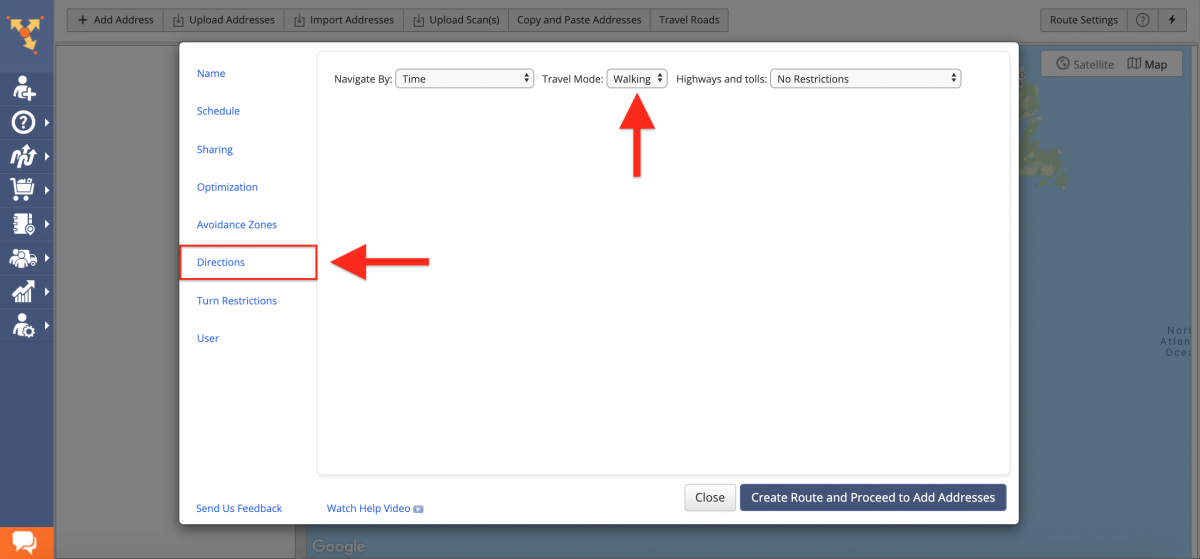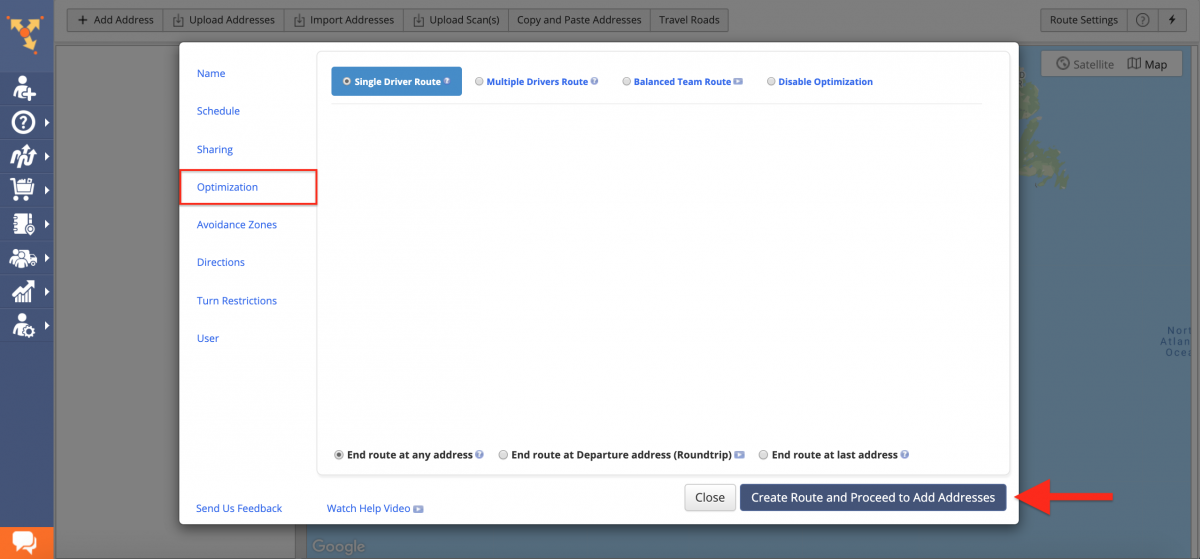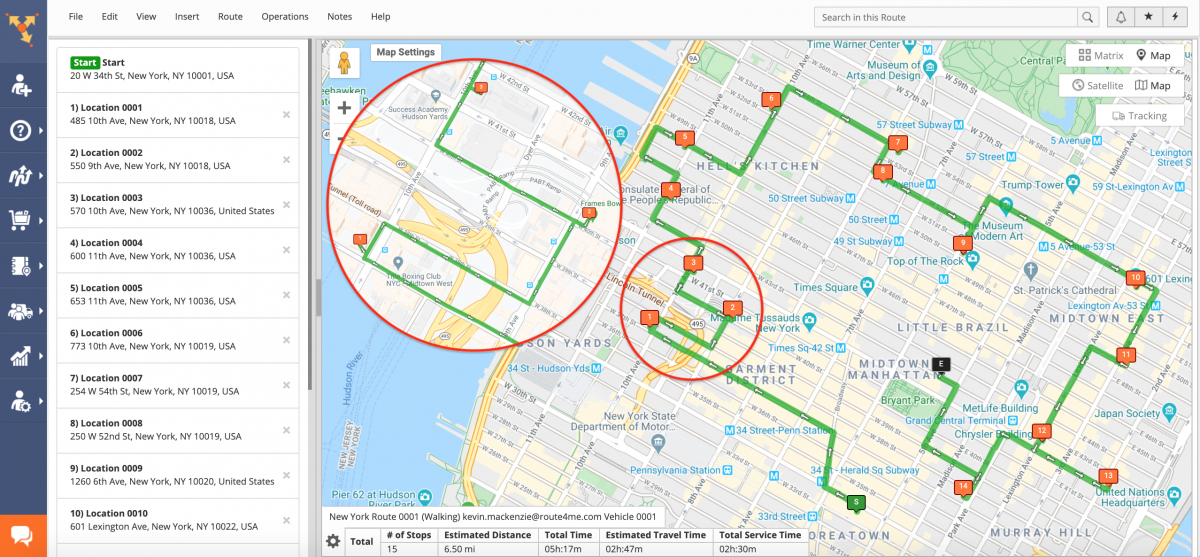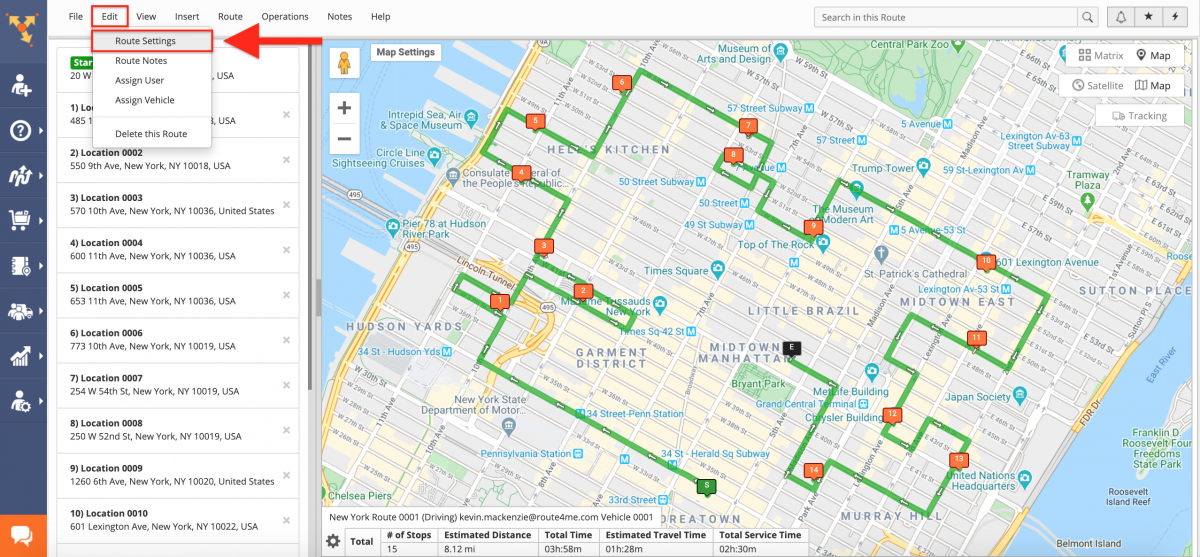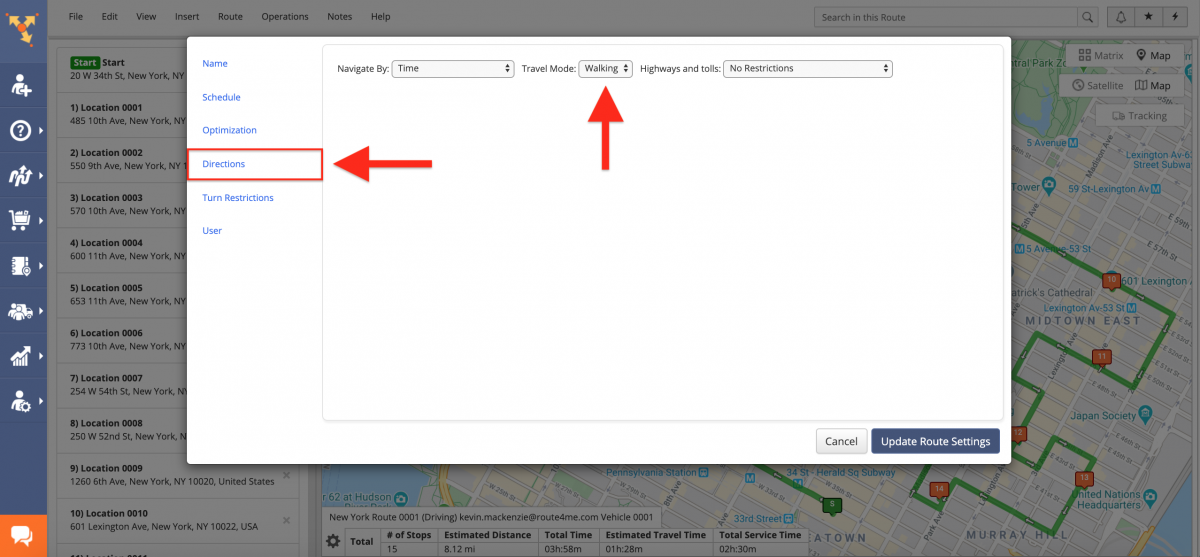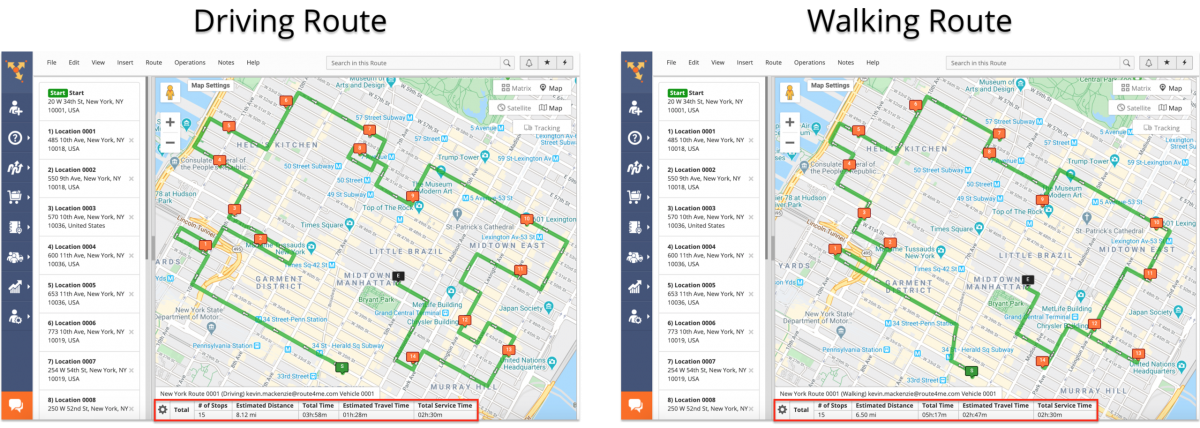Walking Travel Mode – Optimize Routes With Walking Directions
Different businesses and business models require different types of route optimization. Depending on your particular routing requirements and the roads network in your service area, you may need to optimize your routes not only for driving but also for walking or bicycling. For example, such businesses as food delivery, courier services, door to door sales, recreation, parcel delivery, and many other last-mile businesses often choose to complete their orders on foot rather than by driving a car.
Although walking routes are not suitable for long distances, completing last-mile deliveries on foot in the cities with a high density of customers per square mile, heavy traffic, and expensive parking provides a lot of operating and financial advantages. Walking routes don’t burn fuel, don’t require fleet maintenance or expensive vehicle insurance, take hours to find a parking spot, and so on.
Even though walking routes are planned for different roads than driving routes, walking routes still require solving the Traveling Salesman Problem (TSP) and the Vehicle Route Problem (VRP). And the more variables you add, the more routing scenarios there are. Even the simplest route with 15 stops can have millions of possible routing scenarios.
To help you win the last mile, Route4Me’s proprietary optimization algorithm allows you to plan the most cost-effective and time-efficient routes of any complexity specifically for Walking. Moreover, when optimizing Walking routes, Route4Me can take into account such advanced constraints as customer Time Windows, Service Times, team availability, current traffic, weather conditions, and more.
To plan and optimize routes with Walking Directions, first, go to “Plan New Route” from the navigation menu and then select one of the preferred route data import methods: Interactive Map Editor, Copy-and-Paste, Upload a File, or Import Data. To learn more about Route4Me’s spreadsheet requirements, visit this page.
Next, go to the “Directions” tab and then select “Walking” in the “Travel Mode” field.
After that, go to the “Optimization” tab and then select the preferred optimization type: Single Driver Route, Multiple Drivers Route, or Balanced Team Route. Next, specify the rest of the route’s parameters to your preference, import route data into the system, and finish planning the route(s) accordingly (learn more).
When optimizing routes for Walking, Route4Me’s proprietary optimization algorithm takes into account all predefined constraints, computes through millions of routing scenarios, and generates one or multiple routes that include the most optimal sequence of stops and the most efficient road directions specifically for Walking.
Re-Optimizing Driving Routes into Walking Routes
Since Walking routes require traveling on the roads that are different from the roads for Driving, those routes that are optimized for Driving will have different directions, distance, travel time, and other parameters than the routes that are optimized for Walking. To re-optimize a Driving route into a Walking route (from the Route Editor), first, go to “Edit” in the toolbar and then select “Route Settings” from the menu. To learn more about re-optimizing routes, visit this page.
Next, go to the “Directions” tab and then select “Walking” in the “Travel Mode” field. After that, click on the “Update Route Settings” button to apply the changes.
Once the Driving route is re-optimized for Walking, this route’s ETAs, distance, total travel time, travel directions, and other route parameters will change accordingly. Routes that are optimized for Walking have different parameters from the routes that are optimized for Driving due to various factors (i.e., the difference in rules for pedestrians and vehicles, road networks, etc.). Thus, when optimizing Walking routes, Route4Me computes through millions of possible routing scenarios with Walking road networks and generates the most optimal route visitation sequences and navigation directions specifically for Walking (avoiding the roads for vehicles).
Visit Route4Me's Marketplace to Check out Associated Modules:
- Operations
Audit Logging and Activity Stream
- Operations
Custom Data Add-On
- Operations
Advanced Team Management Add-On
